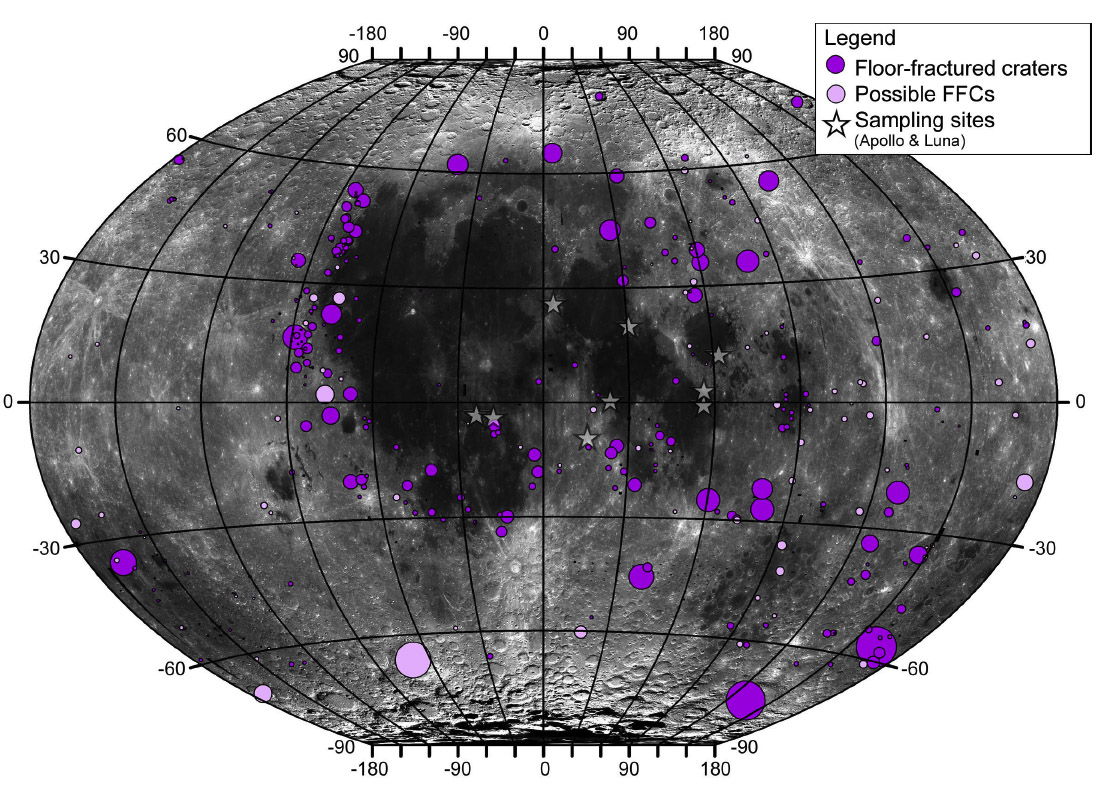June 11, 2020
Wonderfully Modified Craters
Originally published December 29, 2010

image by J. Korteniemi et al (2010)
Floor-fractured craters are the most interesting on the Moon.
Well, you might say, what about Copernicus and Tycho - their floors aren't fractured and they are pretty interesting. True,
but I wonder if they have as many different types of things to see as FFC? Consider FFC such as Alphonsus, Posidonius,
Gassendi and Petavius. First, they are relatively large craters with uplifted floors and related concentric fractures. Second,
these and other FFC often contain various kinds of rilles, concentric craters and dark halo craters. Few FFC are young
enough to have rays (exception is Taruntius) because they already existed when mare basalts were being produced, which
mostly ended about 3 to 2.5 b.y. ago. Nearly all FFC are on the margins of maria and the preferred model is that magma rose
up basin fractures and ponded under the craters, ultimately lifting their floors, and often erupting lavas onto their floors. In
1976 Pete Schultz first brought attention to FFC as a class of modified impact craters and he identified 206 but never
published a comprehensive list of them. This new map, made by summer students interning at the Lunar & Planetary Institute
in Houston, is based on inspection of Clementine and Apollo images, resulting in the discovery of 110 more FFC and 85
possible ones. Sadly, they have not published a list either, but I will try to get it from LPI so that the information can be added
to the Moon-Wiki. With the LRO WAC mosaics that are becoming available it will be possible to confirm these (I doubt that
Theophilus is a FFC) and probably find new ones. This much larger sample size will provide some PhD student the data
needed for a careful re-examination of FFC and perhaps new understanding of their origins.
Chuck Wood
Related Links
J. Korteniemi, D. L. Eldridge, T. Lough, L. Werblin, K. I. Singer and D. A. Kring (2010) ASSESSMENT OF LUNAR VOLCANIC MORPHOLOGICAL DIVERSITY: DISTRIBUTION OF FLOOR-FRACTURED CRATERS. 41st Lunar and Planetary Science Conference, abstract 1335.
Yesterday's LPOD: Smooth Floors, Powerful Inferences
Tomorrow's LPOD: Throwing Out the Washbowl with the Bath Water
COMMENTS?
Register, Log in, and join in the comments.



